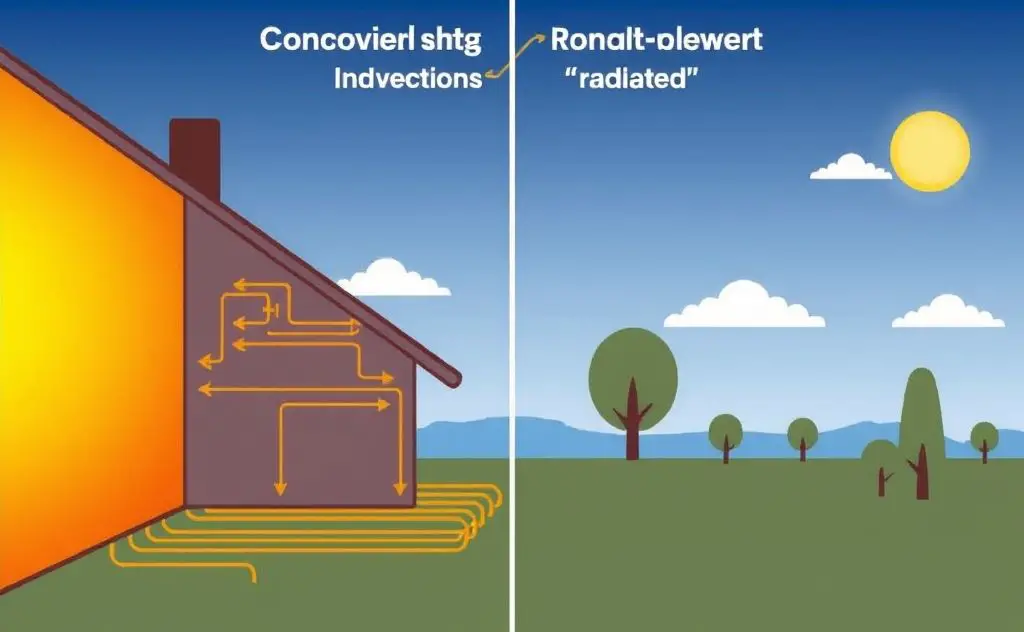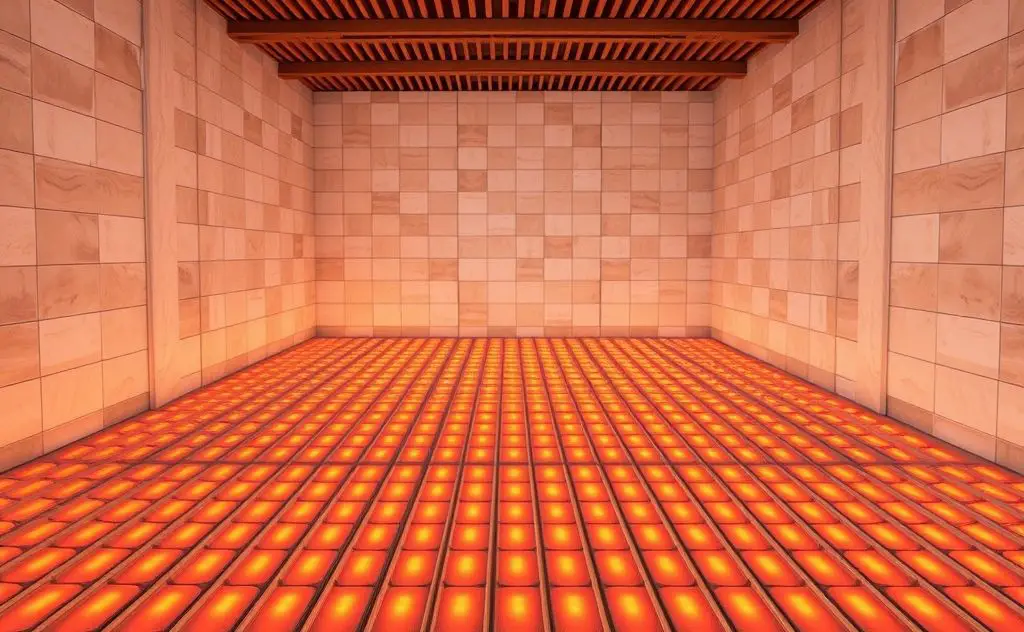Convection heating transfers warmth through air or fluid movement, while radiant heating directly warms objects and surfaces via infrared radiation.
Understanding how convection and radiant heating work helps you choose the right system for your needs. Both methods warm spaces differently, with unique advantages for home comfort.

How Convection Heating Works
Convection heaters warm the air in a room. The heated air rises, creating circulation that spreads warmth. Common examples include:
- Forced-air furnaces
- Baseboard heaters
- Space heaters with fans
The Science Behind Convection
Convection relies on air movement. As air heats, it becomes less dense and rises. Cooler air moves in to replace it, creating a continuous cycle. This process continues until the entire space reaches the desired temperature.
Limitations of Convection Heating
Convection systems face several challenges:
| Issue | Explanation |
|---|---|
| Heat loss | Warm air escapes through windows and doors |
| Uneven heating | Temperature varies throughout the room |
| Energy inefficiency | Systems must run constantly to maintain warmth |

How Radiant Heating Works
Radiant systems heat objects directly through infrared waves. The warmed surfaces then release heat into the space. Popular options include:
- Radiant floor heating
- Infrared panels
- Traditional radiators
The Science Behind Radiant Heat
Radiant energy travels in straight lines from the heat source. It doesn’t rely on air movement, making it more efficient. Objects absorb the infrared waves and become warm to the touch.
Benefits of Radiant Heating
Radiant systems offer several advantages:
- More consistent room temperatures
- Reduced energy consumption
- No air movement means less dust circulation
- Silent operation
Comparing Performance
Radiant and convection systems differ in several key ways:
Heat Distribution
Radiant heat spreads evenly from the source. Convection creates warm and cool zones as air circulates. For example, radiator-style heaters provide steady warmth without drafts.
Response Time
Convection systems heat spaces faster initially. Radiant systems take longer to warm up but maintain temperature better. This makes radiant ideal for built-in heating solutions.
Energy Efficiency
Radiant systems typically use 15-20% less energy than convection. They lose less heat to air movement and maintain warmth longer after shutting off.
Choosing the Right System
Consider these factors when selecting a heating method:
Room Size and Layout
Large open spaces benefit from radiant heat’s even distribution. Smaller rooms may work well with convection.
Installation Requirements
Radiant systems often require professional installation. Many convection options like portable heaters offer plug-and-play convenience.
Health Considerations
Radiant heat doesn’t circulate allergens like convection systems. This makes it better for people with allergies or respiratory issues.
Hybrid Solutions
Many modern systems combine both technologies. For example, some infrared heaters include fans to boost warmth distribution. The Herschel Infrared systems use radiant panels with optional convection assistance.

